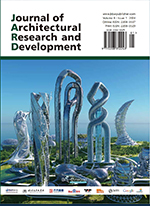Abstract
This work is carried out based on the analysis of urban planning instruments, taking the gender perspective as a foundation. It arises from the inclusion of women in the participation of urban development, through an analysis of the gender gaps that have marked the history of women, the inequalities serve as a basis for carrying out this study. It highlights the challenges we face today as a society in the process of building citizen participation, where we must all be recognized and have equal opportunities within the territory in which we live. This article analyzes the extent to which the Municipal Urban Development Programs of the Mexican municipality of Comala, Colima, Mexico, consider the recommendations on gender and urbanism, established since the 1990s by international entities and applied transversally to urban planning policies. Considerable differences are found between women and men in terms of empowerment and participation in urban territorial planning instruments, mainly in the oldest instrument (1997). Significant progress is observed in the most recent document and is currently in force in the municipality of Comala (2009).
References
SERNAM, 2001, Glossary of Terms. Material Prepared for the International Workshop on Statistics with Gender Equity, INEGI, Aguascalientes, Mexico.
IMCO, 2022, Economic Forum Report, Gender Gap in Mexico, https://imco.org.mx/mexico-avanza-tres-posiciones-en-el-indice-global-de-brecha-de-genero-del-wef/
United Nations, 2020, Sustainable Development Goals and Targets, https://www.un.org/sustainabledevelopment/es/sustainable-development-goals/
IMCO, 2022, Gender Gaps in The Secretaries of State Persist, https://imco.org.mx/las-brechas-de-genero-en-las-secretarias-de-estado-persisten/#:~:text=The%20female%20representation%20in%20the%20secretariats,25%25%20remained%20unchanged%20without%20change
SEDATU, 2015, What Do We Do? https://www.gob.mx/sedatu/que-hacemos
SEDATU, 2022, Simplified Guidelines PMDU, https://mimexicolate.gob.mx/wp-content/uploads/2022/04/Of-V.511.DGDUSV.0695.2022-Lineamientos-simplificados.pdf
Hernández-Rejón EM, Treviño-Hernández R, 2016, Gender Perspective in Urban Research. Vivat Academia, 2016(134): 47–56. https://doi.org/10.15178/va.2016.134.47-56
Rodríguez B, Cinta DM, 2003, An Approach to Female Political Participation in the Municipalities of the State of Veracruz, in Dalia Barrera and Alejandra Massolo (comps.), National Women’s Institute.
Bautista MS, 2000, Women Rulers: The Cases of Banderilla, Coatepec and Gutiérrez Zamora, Veracruz, in Women Citizenship and Power, 161–226. https://doi.org/10.2307/j.ctvhn0952.6
Fernández Poncela AM, 2015, Comala: White Town, Botanero and Best Magical Town, n. 19 (December 2015), http://www.eumed.net/rev/turydes/19/comala.html
Mexico PE, 1988, DECREE Declaring an Area of Historical Monuments in the Town of Comala, State of Colima, Mexico City, http://diariooficial.gob.mx/nota_detalle.php?codigo=4793335&fecha=30/11/1988#gsc.tab=0
CONEVAL, 2018, DataMun, http://sistemas.coneval.org.mx/DATAMUN/dato-actualizado?e=06&m=06003&sg=1&g=12
PROGRAMA, 2009, Urban Development Program of the Comala Population Center.
P.O. C, 1998, Official Newspaper of the Constitutional Government of the State. Agreement.
Innerarity Grau C, Sancho Martínez A, 2015, City and Citizenship. An Analysis of Strategic Urban Development Plans from a Gender Perspective. Feminist Research, 2015(5): 342–370. https://doi.org/10.5209/rev_INFE.2014.v5.48139
